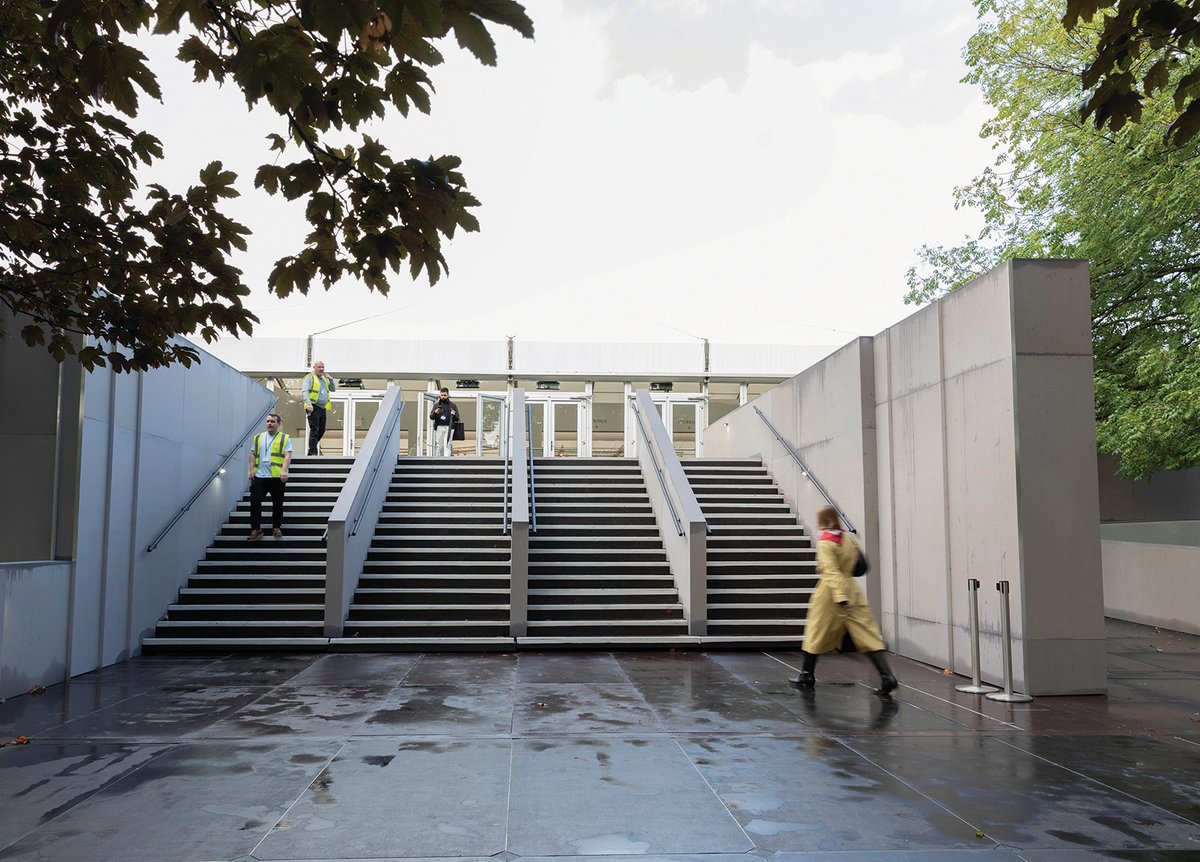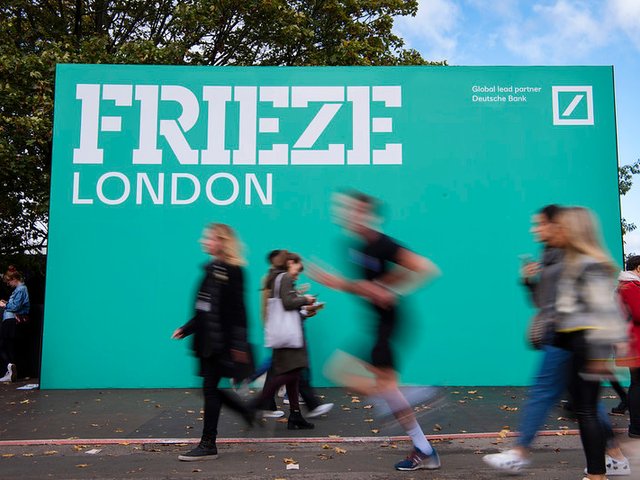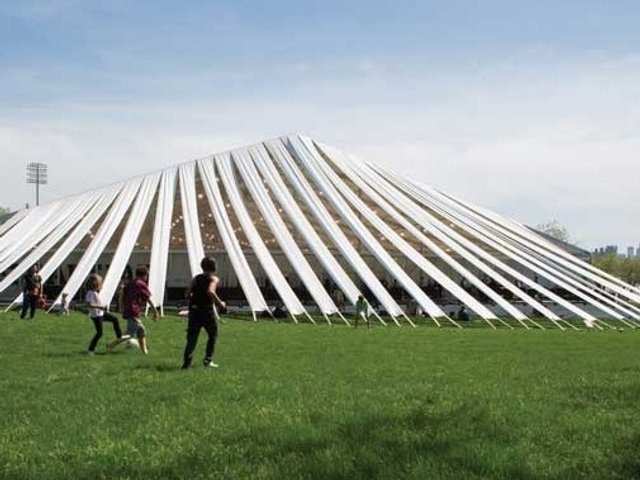In 2023, as Frieze London celebrated its 20th anniversary, long-term observers noted that while the art fair had changed immensely since its inception, it did not actually look all that different. The 100,000-plus visitors still headed for the same patch of Regent’s Park and what was essentially the same tent.
It is a testament to Frieze’s quest to remain at the sharp end of the art world that the fair is defying expectations in 2024 and turning 21 with a bang. “Unlike many other fairs, which are still in rather dull conference centres,” says Frieze London’s artistic director, Eva Langret, “we have the privilege of working within Regent’s Park.” A full revamp of the tent will maximise the impact of that green haven with big windows, an entrance amid the tree tops and a focus on the future.
The design practice A Studio Between worked to a brief, its founder Richard McConkey says, that foregrounded “curated programming, discovery, emerging voices and space for exchange. And you could say, exchange means conversations.” The fair’s footprint itself cannot be altered because of a protected line of trees. Working up 50 3D-rendered floorplans over about four months, McConkey’s team set about making the existing spaces (equivalent to about six football pitches) work harder.
Grand new entrance
Visitors now arrive and exit via a new entrance on the side of the tent, up a grand staircase, from within the park itself. The wall around the entrance has been opened up with windows to let more light and leafy views in. “It makes a really good tree canopy viewpoint,” McConkey says.
Once inside, the first thing you see is a pair of solo artist presentations. Frieze is aiming to upend the traditional market-driven approach that centres on established names and pushes smaller, often more interesting things, to the periphery. Langret says Frieze London has two to three times as many young galleries—30—as most other fairs. “Emerging voices have always been at the heart of Frieze, but not necessarily at the heart of the tent.”
The Focus section, curated with Angelina Volk (of Emalin, London), Piotr Drewko (Wschód, Warsaw) and Cédric Fauq (chief curator at CAPC Musée d’Art Contemporain, Bordeaux), features 34 exhibitors, representing 21 countries. Visitors will be met with a cinematic Eva Gold showcase at Rose Easton’s stand; Hamedine Kane at Selebe Yoon; and dozens of walking penguin balloons by the Danish artist Benedikte Bjerre at Palace Enterprise. In the same section, a prominent space has been carved out for the Frieze Artist Award 2024, given this year to Lawrence Lek.

A rendering of the new layout of the tent, which promises easier navigation for fair-goers, with clear sight lines and no dead ends © A Studio Between
The wider gallery grid is organised around a central, arterial loop, giving visitors clear lines of sight and avoiding dead ends. As Langret puts it, no gallery does not have a good spot. The main route is punctuated by hubs with smaller routes facilitating connection and dialogue between them and the major galleries organised around a new square further into the space.
“Frieze was never just a trade fair,” says Langret, who remembers coming for the first time in 2005. “It has always been about the many conversations that you can anchor around the galleries and the many ways in which they work for the artists. The fair that we have today includes many galleries from geographies that would have been completely overlooked 20 years ago. We now have galleries from India, from Saudi Arabia. We have our first gallery from Senegal coming this year. Frieze has been global from edition one, but the scope of what we understand to be ‘global’ has really grown to be more inclusive.”
Across the park, Frieze Masters has not been redesigned to the same extent, but it is expanding the Studio section it debuted last year. Curated by Sheena Wagstaff, each of the section’s ten stands will focus on a pioneering artist still making work, from the nonagenarians Isabella Ducrot and Thaddeus Mosley to the Indian luminary Nilima Sheikh and the Korean artist Kim Yun Shin.
The palette in this year’s Frieze Masters tends towards earthen hues. And the floorplan has been refined to give visitors clearer sight lines and a greater sense of symmetry and destination. The director of Frieze Masters, Nathan Clements-Gillespie, says he hopes that when people walk in they will feel “the fair invites you in, and naturally and effortlessly you navigate and discover what is on view”.





